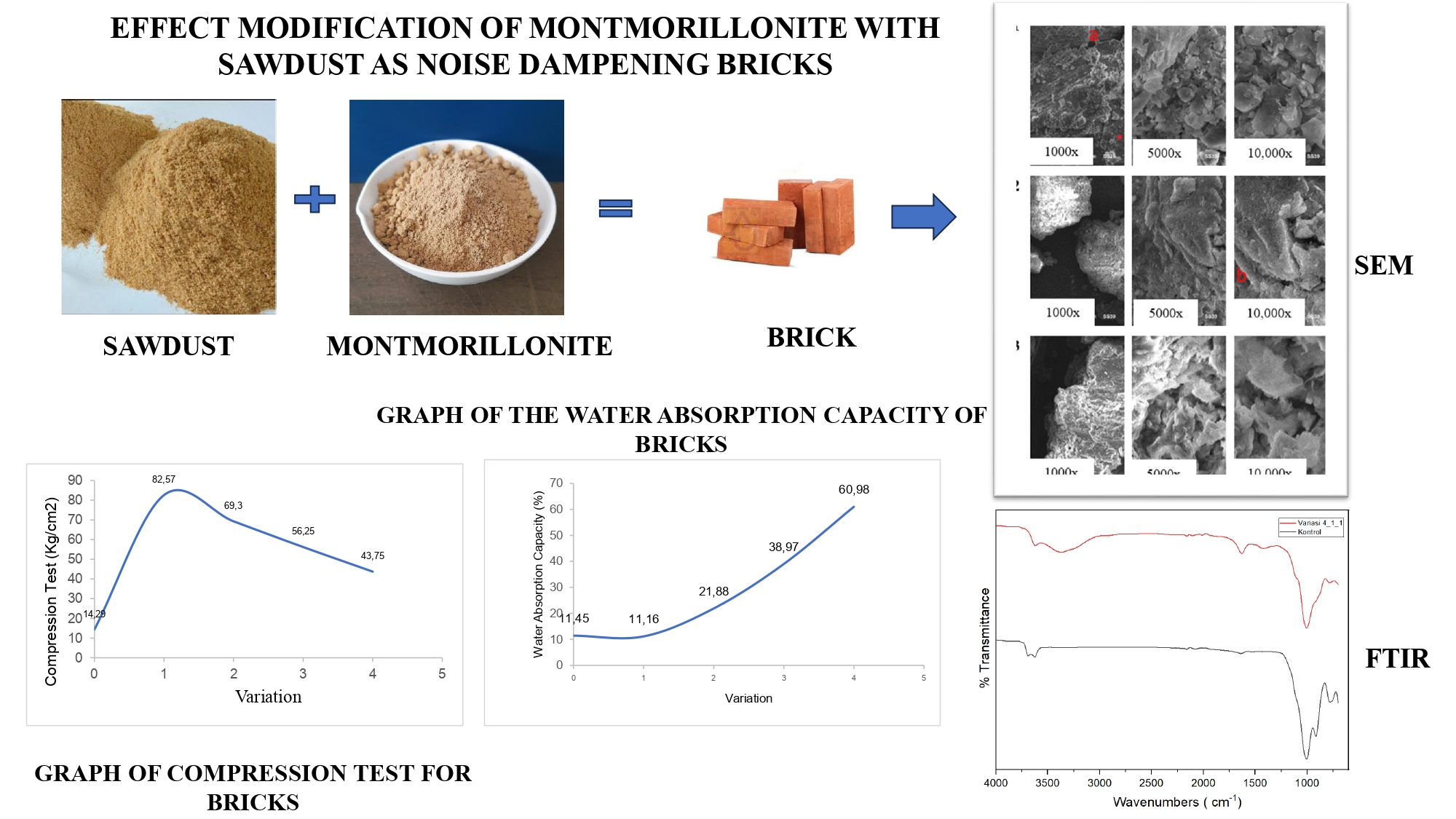
Modification of montmorillonite with sawdust as noise dampening bricks
DOI:
10.29303/aca.v7i1.176Published:
2024-04-18Issue:
Vol. 7 No. 1 (2024)Keywords:
Bricks, Montmorillonite, Wood Powder, Compressive StrengthArticles
Downloads
How to Cite
Siregar, S. H., Syahbella, O. ., & Ramadhanti, A. R. . (2024). Modification of montmorillonite with sawdust as noise dampening bricks. Acta Chimica Asiana, 7(1), 443–448. https://doi.org/10.29303/aca.v7i1.176
Downloads
Download data is not yet available.
Metrics
Metrics Loading ...






 Indonesian Chemical Society, Chapter Nusa Tenggara. Jalan Majapahit 62 Mataram, University of Mataram, 83125, Indonesia
Indonesian Chemical Society, Chapter Nusa Tenggara. Jalan Majapahit 62 Mataram, University of Mataram, 83125, Indonesia





